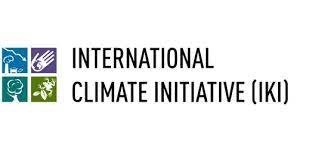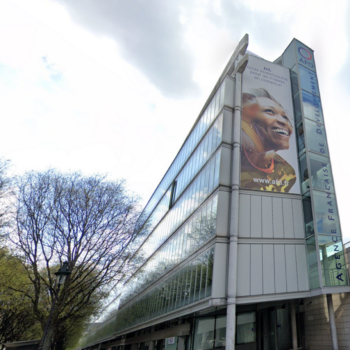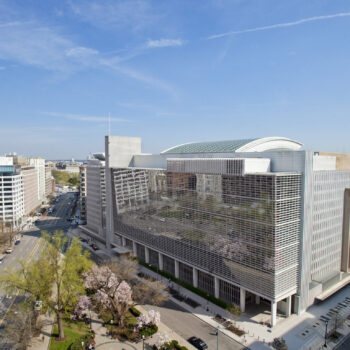The contribution to a net-zero, resilient economy is a central aspect of sustainable finance. Thanks not least to the Fridays for Future movement, the fight against climate change is an issue of immense political importance. The Paris Agreement, which (with the re-entry of the USA) encompasses almost the entire global economy, not only requires the international community to set targets for climate protection. The Agreement also stipulates that the global financial system will have to do its share in limiting global warming to 1.5°C (Article 2.1 c).
The question of what climate-friendly investments are is not only a concern for private actors, but also for public development banks. With more than $2.3 trillion in annual investments (10% of global investment), they have a key role to play in shaping global financial flows in line with the Paris Agreement. In addition to national heavyweights such as Germany’s Kreditanstalt für Wiederaufbau (KfW), these are first and foremost multilateral development banks (MDBs) such as the World Bank Group, the European Investment Bank (EIB) or the Asian Development Bank (ADB). MDBs are mandated to finance sustainable development at the global level, therefore also form an important building block in the fight against climate change. They are thus predestined to set a precedent for Paris-aligned banking.
A gap between aspiration and reality
Two years ago, at the United Nations Climate Change Conference in Madrid, MDBs announced a reform of their business activities to align all operations with the Paris Agreement. However, now already five years since the Paris Agreement, MDBs have not yet published what Paris alignment means concretely, and just published a methodology consisting of six building blocks:
- Alignment with Mitigation Goals: Consistent operations with national low-emission development pathways and Paris Agreement objectives
- Adaptation and Climate-Resilient Operations: Screening operations systematically for climate risk and increase client’s ability to adapt to climate change
- Accelerated Contribution to the Transition Through Climate Finance: Scale up climate finance
- Strategy, Engagement and Policy Development: Long-term strategies for low-emissions and climate-resilient development
- Reporting: characterize, monitor and report on Paris aligned activities
- Align Internal Activities: Facilities, internal policies and operations aligned with the Paris Agreement
E3G, an independent climate change think tank, has further refined the MDB methodology with 15 metrics. For example, in the first building block, we look at the internal tools of an MDB to promote climate-friendly projects. Simplified, our analysis focuses on structural design, institution-wide strategies and processes to get a holistic understanding of the MDBs’ transformative efforts.
The result is clear: all MDBs are still far from being aligned with the Paris Agreement. But our fine-grained analysis also shows that selected MDBs are already well advanced and excel in specific areas. Based on this research, we can sketch a transformative, climate-friendly development bank that combines the best practices of MDBs.
What does it take to become a transformational climate bank?
Those MDBs that have developed a long-term strategic vision for their role in the fight against climate change do also stand out positively in the overall comparison. The European Investment Bank, whose Climate Bank Roadmap is aligned with scenarios limiting global warming to 1.5-degree is a leading example. As the first major financial institution, the EIB is aiming for a bank-wide application of the EU Taxonomy for Sustainable Finance. Consequently, the EIB has been assessed as “Paris aligned” in the area of strategic alignment – the only MDB in this metric.
However, strategic ambitions of the entire organisation must also be reflected in individual business areas. Here, the EIB has room for improvement, as the vision of the Climate Bank Roadmap has not yet permeated all sectors, such as in transport. In this metric, the Inter-American Development Bank (IDB) has set an exciting precedent with climate strategies for individual sectors. These strategies set out the challenges and opportunities that climate change will imply for sectors such as water, energy, mobility, urban development or agriculture. What is more, the IDB has committed to test all its policies for “Paris alignment” in the coming year.
The implementation of the strategic climate goals requires appropriate instruments.
The transformation from an emission-intensive to a net-zero economy poses an extraordinary challenge. Three instruments help to redirect investments accordingly:
- Exclusion of investments in fossil energy sources.
- Pricing of absolute emissions to show the real costs of a project, and
- Setting minimum technological standards and requirements.
The EIB is a frontrunner in both the exclusion of fossil fuel projects and the application of a shadow carbon price. The EIB’s Energy Lending Policy has excluded almost all fossil fuel investments. The exclusion of coal is already more or less MDB-wide consensus, although a formal exclusion is still missing for a majority of MDBs. However, an end of investments in oil and gas is not in sight for any of the other MDBs. The EIB has excluded investment in oil infrastructure and power plants altogether, while it has defined such strict criteria for gas power plants, requiring maximum efficiency and an exit plan, that investments in today’s technologies are virtually excluded. Not without reason did EIB President Werner Hoyer declare that ‘gas is over’.
The situation is similar with regard to emissions pricing. The application of a shadow carbon price in the economic assessment of projects shows society’s costs in terms of environmental damage, and thus should favour low-carbon alternatives. In essence, this is about the internalisation of externalities. Here, the EIB’s climate roadmap foresees a price rising to €250 per tonne of CO2 by 2030, which is significantly higher than that of any other MDB. But the application of the shadow price is crucial. Since the emission data is generated by a model, the underlying assumptions, for example in the area of mobility, can weaken the transformative potential of the price. Transparency on how the price is calculated, application to absolute and not relative emissions and the link to actual decisions making are also essential.
The third instrument for MDBs is setting a minimum standard for technologies. Public banks with a development mandate have more leeway to promote innovation than private institutions. The European Bank for Reconstruction and Development (EBRD) has set comprehensive efficiency standards as part of its Green Economy Transition 2.1 approach, especially in the areas of transport and buildings. In the latter, the bank relies primarily on industry standards for efficient construction, such as the Leadership in Energy and Environment Design (LEED) standard, but it has also developed its own principles for energy-efficient construction. In addition, the EBRD requires energy efficiency standards from partner banks and can thus support the anchoring of innovations in the market.
Climate risks must be taken into account
With the impact of climate change unfolding, dealing with the effects has become a central issue for the financial sector. Therefore, banks’ risk models must be expanded to include a climate risk dimension. Here, those MDBs operating in regions that are particularly vulnerable have excelled – first and foremost the African Development Bank (AfDB). The AfDB was not only one of the first MDBs to systematically integrate climate risk into project development and evaluation. The Paris Agreement stipulates that designated climate finance should be balanced between adaptation and mitigation measures. The African continent in particular is already strongly affected by climate change, so it is not surprising that the AfDB is the only MDB to achieve this goal. This is not least a success of the innovative Adaptation Benefit Mechanism, which demonstrates the cost-effectiveness of adaptation measures.
Societies can mitigate the impact of climate change with different measures. A promising approach is adopting nature-based solutions, such as using mangrove forests to protect against flooding, or forests to prevent desertification and soil erosion. Here, the Asian Development Bank is a pioneer. The Bank has a framework to integrate natural infrastructure into its projects to promote adaptation to climate change. Nevertheless, for all MDBs, the issue of land use, protection of natural habitats and biodiversity continues to be controversial, as conflicts continue to arise between MDB-financed projects and the protection of nature, indigenous people and local communities. This remains a significant challenge for development banks and will require decisive action from all MDBs.
Cooperation with partners is crucial
Cooperation with partner countries and clients is of particular importance in the fight against climate change. Like private banks, MDBs depend on their clients’ demand for investment. However, MDBs have become think tanks for country strategies and actively participate in planning the economic development of their clients. The Inter-American Development Bank takes a transformative approach in its country work and actively promotes the development of long-term strategies that show a path for deep decarbonisation of regional economies. A flagship example is their cooperation with Costa Rica, which has contributed to the country’s current status as a pioneer in climate-friendly development. Using in-house expertise to address the problem of climate change is not only an economic and social value-added for public banks. Private banks should also actively support their clients in identifying climate-friendly solutions, not least in their own business interest.
This brings us to the final point: transparent reporting and bank leadership. A transformative climate bank must use its own efforts, experiences, and insights to motivate other banks to aspire to transformational reform. MDBs have already done a lot in this regard. For example, they have been at the forefront of the Green Bond development, launching a multi-billion-dollar capital market. However, there is no time to bathe in past glories. The speed with which the financial system is being reformed, including through mandatory climate risk reporting and the EU Taxonomy for Sustainable Finance, puts pressure on MDBs to evolve in order to continue to be perceived as innovation hubs. It is also essential that MDBs report transparently on their progress and the Paris alignment of their portfolios. Here, the need for catching up is evident. For example, only the EBRD has started to report on climate risks under the Taskforce for Climate-Related Risk Disclosure (TCFD) recommendations. The next crucial area of reform will be dealing with clients and cooperation partners who have not yet sufficiently addressed the challenge of climate change. These questions will continue to shape the debate on genuine, Paris-aligned banking.
The four aspects of a climate bank
What is the design of a transformative climate bank in order to credibly tackle climate change? First, a climate bank must develop a coherent strategic framework that integrates the challenges and opportunities of climate change into the organisation, business model and individual operations.
Second, a climate bank needs innovative instruments that can implement the strategic objectives in day-to-day business and thus add a climate dimension to the logic of investment decision making. Using its technical assistance and clear lending policies to shape project pipelines will greatly increase the number of high-quality climate projects and thus the climate impact of banks.
Third, a climate bank must be able to price in the impact of climate change, such as the increased likelihood of droughts or floods, as well as transition risks, and reduce such risks through mitigating measures, reflecting these risks in the financial appraisal of projects.
Finally, a climate bank needs to spread its transformational reform efforts through the financial system through transparent reporting and interaction with clients, partner organisations and society. The multilateral development banks, although by no means free of doubt and criticism, have already taken important steps in this direction. We should take note!
This article was originally published on the Website of the Heinrich Boell Foundaton , DC office, on April 9th 2021.
This article was also published in German by Greening Finance on February 11th, 2021.
E3G would like to thank the International Climate Initiative for the support in this project.



